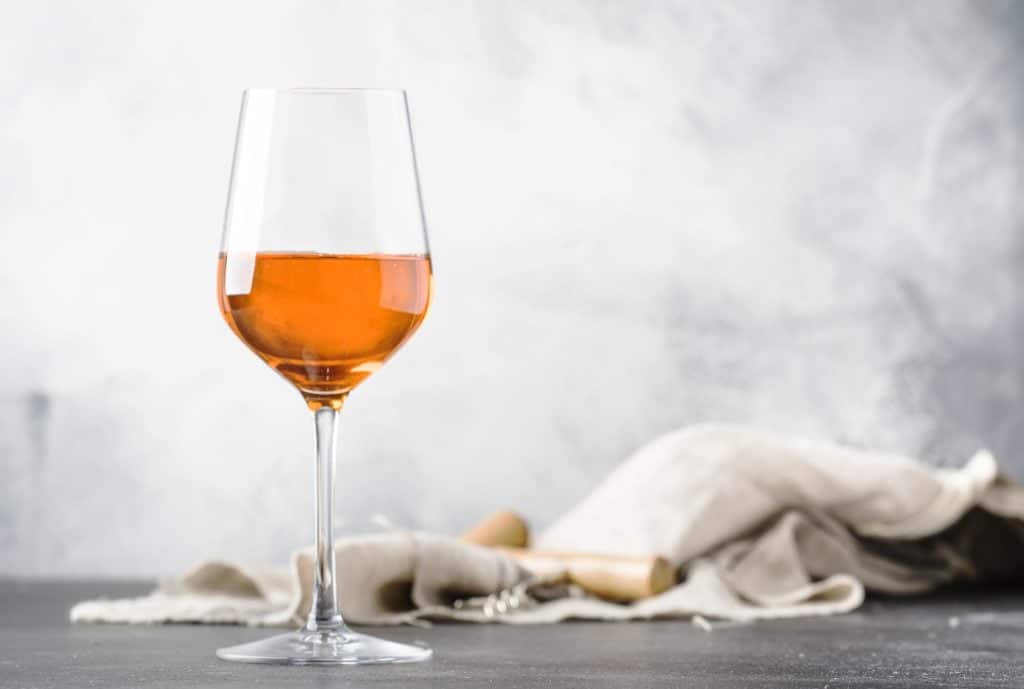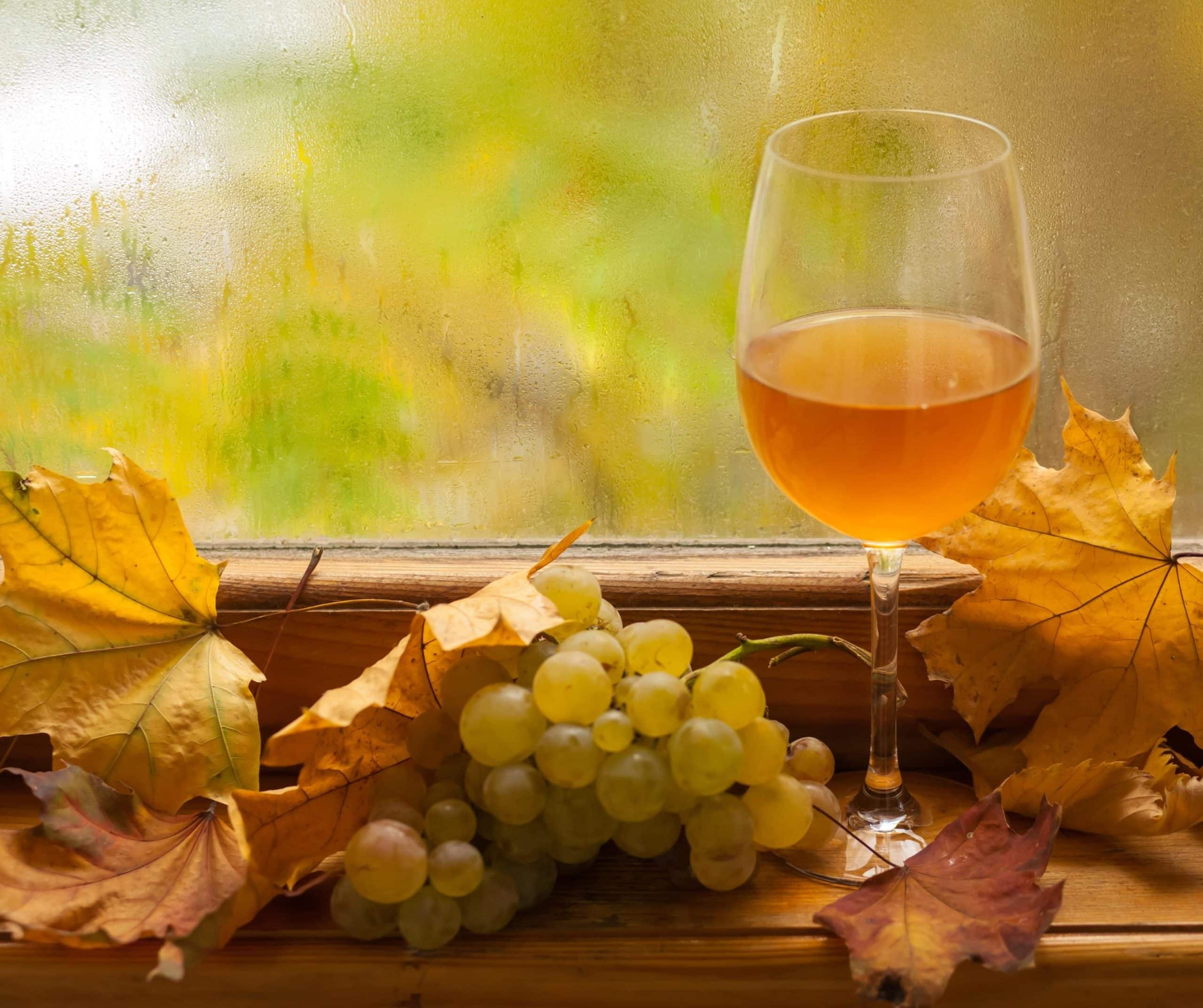If you are a wine connoisseur and you reached out in the wine world you’ve most certainly noticed a general appeal to ‘orange’ wines lately. For the past few years, they’ve become the interest of the winemakers and wine-sellers, restaurants, and wine lovers as well.
Not white wine, nor red wine, close to rosé, but not exactly, ‘orange’ wine has made its own category. Some may have been open to tasting ‘orange’ wine, but not everyone may know exactly what it is. If you’re curious to find more information, just go on with the reading.
It’s all about the skins! (How ‘orange’ wine is made)
‘Orange’ wine, also known as ‘skin-contact white wine’, ‘skin-fermented white wine’, ‘amber wine’, or legally ‘white wine with maceration’, is a type of wine made from white wine grapes where the grape skins are not removed, as in typical white wine production, and they stay in contact with the juice for days or even months.
The most basic explanation is that ‘orange’ wine is made from white wine grapes using the same process used to make red wine. Traditionally, white wines are made from white grapes pressed immediately after harvest, to remove the juice from the grape cluster’s skins, seeds, and stems. This gives a clear liquid to ferment into white wine.
With red wine, the process is kind of reversed. The red skins of the grapes are kept to give red wine its colour. (In reality, most red grapes have clear juice, just like white grapes) The grapes are left then to macerate with the skins and juice to extract colour during fermentation.
In fact, most red grapes have clear juice, just like white grapes. That’s why, by quickly collecting the unpressed must, white wines can also be made from grapes with colored skins (‘blanc de noir’). The same cannot be said about grapes that also have reddish pulp, the so-called ‘tinctorial’ grapes, such as Alicante Bouschet..
Why is it called ‘orange’ wine?
I won’t insult your intelligence saying that only grapes are involved in the ‘orange’ wine. It’s just the huge number of people who believe otherwise will need the clarification.
The name comes from the slightly orange, amber, salmon colour the wine takes on.
Though some grapes, such as Pinot grisandGewürztraminer, have skins with a light rosy hint that adds colour to the wines, the orange-amber tone is partly the result of the increased exposure to oxygen that the juice experiences during the skin maceration process.
Think of it as a sliced apple that begins to brown after sitting in the air for a while. Even if the air exposure is in general as minimum as possible, it is in fact enough for the wine to take on a little bit of colour.
Temperature also plays a key role. The warmer the fermentation, the deeper the colour of the wine will gain.
A bit of history of orange wine
Orange wine has seen an amazing rise in popularity in recent years. You wouldn’t probably expect to hear that the origins of this style of wine are ancient — it has been produced for thousands of years!
Archaeologically, there is evidence proving that it was made as far back as 6000 B.C. in the place of modern Georgia. Georgian wines – Otskhanuri Sapere and Saperavi), albe sau portocalii – au fost facute predominant din strugurii Rkatsiteli in clay vessels buried in the ground to keep temperatures lower. These vessels, known as ‘qvevri’, are traditionally lined and sealed with beeswax and stone lids. This tradition still defines much of Georgian winemaking today.
Orange wine around the World
The Roman Empire may have done some orange wine too. The Romans used clay pots, or amphorae, to transport wine to Alentejo, Portugal, where the practice still remains a central part of the winemaking tradition. Even though most of the amphora or ”tahla” wine is red, many producers (such as Herdade do Rocim and Adega Cartuxaalso make a version of white, skin-contact wine.
In north-eastern Italy, ‘ramato’ (which is Italian for auburn or copper) is a style of orange wine made from Pinot Grigio, as well as Sauvignon Vert andRibolla Gialla.
In Slovenia, just across the border from Italy, the style has become a hallmark of the country’s historic winemaking tradition.
In France, the Jura region is known for “Vin Jaune” and “Côtes du Jura”, both of which are made in a similar method with an oxidative style.
In the New World, in the last 10 years, producers from New York, California & Oregon, and Chile, and Australia have already experimented with the style and more research is following up.
Orange wine general pointed characteristics
Most ‘orange’ wines are fermented to be dry (meaning not sweet); however there are for no doubt some off-dry (slightly sweet) orange wines out on the market from more creative and ambitious producers.
‘Orange’ wine has way less alcohol than traditionally produced wines. Some ‘orange’ wines have as little as 10% alcohol which makes it a perfect companion for dinner parties. In general, orange wines are very balanced and low in alcohol. Which is why ‘orange’ wine is not the cup of tea/ glass of wine for every wine lover.
How does it taste orange wine?
Orange wines are generally palate-coating, grippy and have flavours of mandarin, citrus, bruised fruits, sour beer and/or bitter herbs, depending on the winemaking techniques and grape varieties used. On the palate, they’re big, dry, and even they have tannins like a red wine, they have the sourness of a fruity beer. Often Orange wines are so intense that you might think something just slapped you in the face. Jokes aside, they are powerful, intense and with a strong character. Not necessarily beautiful.
In general, you can preserve an open bottle of wine for three days, with certain bottles lasting longer than others depending on the grape variety used and on the winemaking process they were made.
Who drinks ‘orange’ wine?
In the 90s, with the natural wine trend increasing, orange wine started to become known and appreciated thanks to two Italian winemakers (Stanko Radikon and Joško Gravner). The popularity grew more and more in Europe (France, Germany, Austria, Spain etc) and in the New World (USA, Canada, Australia, New Zealand etc).
Individually, an ‘orange’ wine drinker/ passionate likes powerful, intense, unique, bold character wines. He/ she is a curious person and appreciates the winemaking process inside the glass of that ‘orange’ wine.
Best ‘orange’ wines to try:
- Orange Natural Wine, made from Feteasca alba, Sauvignon Blanc and Tamaioasa romaneasca, produced by Cramele Recas.
Crossing our borders, you should give a try to
How would you pair ‘orange’ wine with food?
As ‘orange’ wines are typically dry with hints of tannin and a weightier mouth feel, more robust than a white wine but with less intensity than bold, tannic reds they are a perfect match for a variety of cuisines.
Bold flavours work best. Try strong cheeses, charcuterie or Moroccan dishes with cumin, pepper, cinnamon, paprika, and saffron spices.
Alternatives: Indian curries, savoury Spanish-style tapas, grilled meats and fish.








